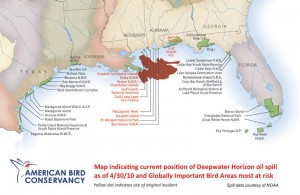From Eliseu Bettencourt, one of the authors of the paper concerned.
The paper “Cereal landraces for sustainable agriculture. A review” was recently made available on-line at Agronomy for Sustainable Development, though behind a paywall. The paper version will be published soon.
The paper is co-authored by eighteen authors pulling together diverse backgrounds and expertises.
The review addresses the current status and prospects for cereals landraces in the context of sustainable agriculture, discussing the place of landraces in the origin of modern cereal crops and breeding of elite cereal cultivars, the importance of on-farm and ex situ diversity conservation; how modern genotyping approaches can help both conservation and exploitation; the importance of different phenotyping approaches; and whether legal issues associated with landrace marketing and utilisation need addressing.
The paper also deals with the current status and potential for the improved deployment and exploitation of landraces, and incorporation of their positive qualities into new cultivars or populations for more sustainable agricultural production. In particular, their potential as sources of novel disease and abiotic stress resistance genes or combination of genes if deployed appropriately, of phytonutrients accompanied with optimal micronutrient concentrations which can help alleviate aging-related and chronic diseases, and of nutrient use efficiency traits.
The paper is structured in 12 chapters, namely: Introduction; History of cereal landraces; Diversity and germplasm collections; Genebanks and conservation of cereal landraces; Genotyping and phenotyping; Nutrient uptake and utilisation; Nutrition and quality; Biotic and abiotic stress resistance and tolerance; Breeding: conversion of landraces into modern cultivars; Participatory breeding; Legal issues; Conclusions. The paper also counts with an extensive list of bibliographic sources.
The main findings of the paper can be summarised as: A lot of recent research effort has gone into collecting, organising, studying and analysing cereal landraces with a primary goal being to incorporate their positive qualities in new cultivars or populations for a more sustainable agricultural production, particularly in response to recent climate changes.
A major part of this valuable landrace diversity is conserved in the world’s genebanks network and should be exploited systematically for traits such as quality and specific adaptations to stress environments. However, the available genetic variation in adaptive responses to soil and climatic conditions conserved in landraces is little understood, and even less used. More uniform and user-friendly documentation about collection and characterisation of landraces, either morphologically or with molecular tools, is needed to access this variation more effectively. Genebanks should aim at adopting a common concept of landraces and plan special inventories for them. The level of diversity should be monitored during their conservation so that the original level of variation is maintained. More studies are needed in order to investigate if their long-term maintenance by farmers resulted in increasing genetic variation.
New high-throughput genotyping platforms and phenotyping data in common databases will enable powerful association genetic approaches to be used for improvement and direct deployment of landrace resources.
The renewed focus on cereal landraces for breeding purposes is also a response to some negative consequences of modern agriculture and conventional breeding, such as the liberal use of high inputs, the loss of genetic diversity and the stagnation of yields in less favourable areas.
Further enhancement of productivity and stability is achieved through practicing “non-stop selection” within landraces across the marginal production environments, to exploit the constantly released by the genome useful adaptive variation.
The review highlights the value of landraces as resources for the future sustainability of cereal crop production, the methods to enhance their genetic makeup and avoid seed degradation and emphasises the level of co-ordination and resourcing needed to realise the great potential of cereal landraces.

